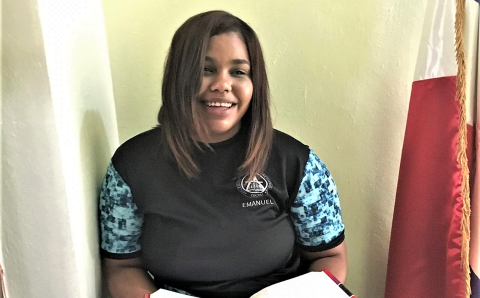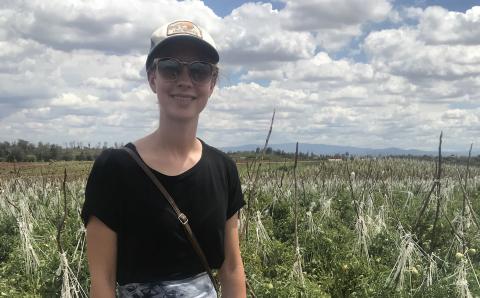After 10 years of integrated ministry, the Christian Reformed Church closed its mission among the Krim people in southern Sierra Leone because of lack of conversions, among other factors. Unlike its better-known mission among the Kuranko people in the north that resulted in a flourishing church, the closure of the Krim mission in 1991 abruptly ended the evangelism work of World Missions (now Resonate Global Mission) and development work of the Christian Reformed World Relief Committee (now World Renew).
Today, decades later, there are churches in six Krim villages, each with a pastor. How does a church emerge decades after a mission field is closed due to lack of response to the gospel? Is it possible that the seeds of good news were planted during the decade when the mission was active—only to lie dormant and sprout much later?
The term “integrated ministry” means that evangelism and development work are carried out together in each village. Through evangelism that included telling Bible stories and baptisms, along with community development programs in agriculture, primary health care, and adult literacy, those who ministered alongside the Krim people hoped an indigenous church would emerge.
As a result of this ministry, food security and adult literacy among the Krim increased and child health improved. But conversions and baptisms were rare as the grip of Islam and traditional religion continued. With bleak prospects for the emergence of an indigenous church, the denomination decided to close the Krim mission.
In March 1991, three months after the mission closed, a brutal civil war broke out that lasted until 2002. Most of the Krim people fled. But not Julius Jabah, one of the mission’s former evangelists. He confronted approaching rebels, challenging them to not kill or steal but to lay down their weapons. Some did so. It seemed a bold gospel was needed. Jabah later became a worship songwriter and the pastor of the Kpanguma church.
After the war, the evangelists met and decided to continue their church-planting work on their own. This time, people were more receptive; many accepted their invitations to follow Jesus. Post-war hopelessness, dismal poverty, or a new generation might have contributed to this new interest in the gospel, but the resolve of the local evangelists was key.
Pastor Samuka Bonnie, a former Muslim, received Bible training from a pastor who had hosted his family during the war. He returned to start a church in his home village of Mano and also in nearby Karleh. In these and other villages, small gatherings of Christians started meeting regularly to sing, pray, and hear the Scriptures. By 2010, Krim evangelists had established six churches.
Attendance at these churches today varies from 50 to 120 people. Most meet in open, thatch-roofed structures where the music and preaching is not confined by walls. Neighboring churches celebrate events such as Easter, Thanksgiving, and Christmas together, inviting the entire village and feeding everyone after the service.
Did the CRC mission somehow contribute to the emerging Krim church? Today’s church leaders are sure it did. Pastor Samuka attributes his own conversion from Islam to the Krim mission: “I made up my mind to be a Christian, a follower of Christ, because of the mission work,” he said. He baptized 15 new Christians, including his sister Martha, in January 2019.
Pastor Tommie Lebbie, now retired, said, “The work we started is bearing fruit. We broadcast the seed—not all is choked or on rocky ground; some will germinate, as slowly as it may. The seed sowed is now sprouting.” All the pastors of the Krim churches claim training by the mission as a critical factor in their work today.
The Krim church continues practicing an integrated ministry, sometimes in unexpected ways. After the war, accusations and discord existed in some villages as participants from both sides returned home. The church played important roles in discouraging revenge and practicing forgiveness and reconciliation in the community.
The Ebola virus devastated Sierra Leone from 2014 to 2016, resulting in 3,955 deaths nationwide. But none of these deaths occurred in places where the Krim churches had participated in community awareness campaigns. The region’s remoteness undoubtedly helped keep Ebola at bay, but the church was crucial in preventing this contagious and deadly disease.
Giving birth is always a risk to mother and child. When a birth goes wrong, the nearest hospital might be five hours away by river. Hannah Momai, a former health worker for the mission and a member of the Mano church, arranges emergency boat transport, and the church helps pay the fare.
Parents know the importance of educating their children, but the one school in Kpanguma was not enough. So parents and pastors started Christian schools in three other villages. The pastors do double duty as teachers. Only Pastor Francis Gormoh is a certified teacher, and the schools receive no support from the outside.
A “hungry season” occurred every June to August because the rice yield, traditionally grown in the rainy season, was too low. In the 1980s, the agriculture program tried introducing irrigated rice in the dry season, but did not succeed because of the inputs and technical expertise required. The church recently recalled this way of growing rice and asked the Ministry of Agriculture for training and seed. As a result, during the dry season of December 2018 to March 2019, 53 farmers from five villages grew rice, with harvests expected to eliminate or shorten the hungry season.
Today, an integrated ministry continues to thrive in the Krim church. Some remnants of development work introduced 37 years ago are being recovered, but the church is also discovering its own ways of serving the community. When an integrated gospel takes root, it branches out everywhere.
The vision for the Krim church is no different from that of the original mission: people worshiping Jesus and having healthy babies, enough food, education for children, and adults who can read and write. For that, “the church will need people to be trained in communicating the message of Christ,” said Pastor Tommie, “so that a holistic word-and-deed ministry that shows so much care and concern in the wider community will continue.”
The needs for this vision are great. Pastors need training in interpreting the Bible, in Christian-Muslim relations, and in other pastoral skills. Churches need Bibles, church school materials, and recording devices (or an app) to learn locally written songs. Women want literacy training to read the Bible and dresses for Sunday worship. Worshipers long for proper church buildings, including mud walls, zinc or tin roofs, and latrines.
Help may be at hand. The Krim church now knows about the Christian Reformed Church of Sierra Leone that resulted from the successful Kuranko mission in the north. Pastor Samuka has met one of its trainers, and plans are underway for Timothy Leadership Training. The Krim churches also are considering joining the CRCSL. This CRC could replace the one that left.
The Krim mission began with a hopeful vision of an integrated gospel taking root. That happened—but not in the way mission agencies or anyone else could foresee. A small group of Krim Christians, acting on faith, planted Christ’s church and began to love their neighbors. The CRC left the Krim, but the Spirit stayed—and the seeds planted long ago are still bearing fruit today.
About the Author
Harry Spaling lived and worked in Sierra Leone as an agriculturist on the Krim team and then as country director for CRWRC (now World Renew) and World Missions (now Resonate Global Mission) from 1982-1988. He is a professor of geography and environmental studies at The King’s University, Edmonton, Alta., and a member of Fellowship CRC in Edmonton.








